
| 
|

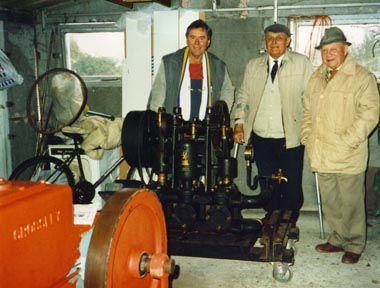 THE OWLS HOLE PUMP AND ENGINE
THE OWLS HOLE PUMP AND ENGINEMalvern Hills, England
In 1995, two historic artifacts of Malvern's water heritage were reunited after 50 years apart. This document summarises the background to this important event which came about as a result of the fieldwork and research into Malvern's celebrated water supplies.

Picture - Cliff Whalley (right) and Bert Howell (centre) advise Bruce Osborne on restoration, 1995.
Produced by and copyright of the authors.
Dr. Bruce E Osborne
and Cora Weaver, M.St.(Oxon).
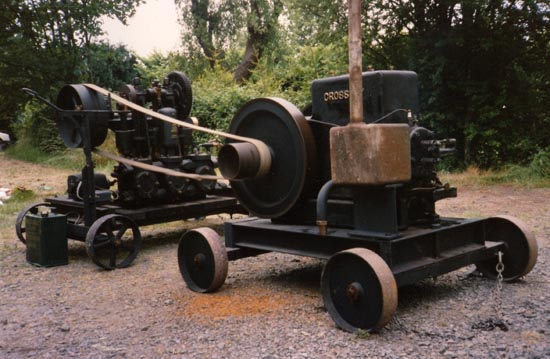
The Owls Hole Pump and Engine, 1995.
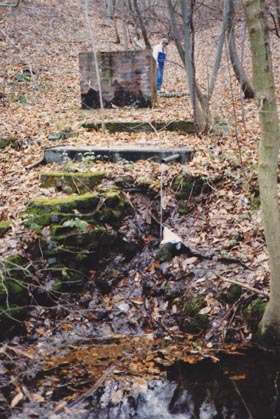 many houses in the neighbourhood including, between 1947 and 1955: The British Camp Hotel (Mr & Mrs Long) and swimming pool, Beacon Lodge (Mrs Drummond and Miss Turner), Toll House (Mrs and Mr Somers), Windy Acre (Professor and Mrs Nicholls), The Pleck (Mrs and Mr Byrd) and Wynds Point (Dame Cadbury). The supply ran from the pump, by 2 inch main, to an underground valve chamber across the road from Wynds Point Spout. Valve "A" controlled the
many houses in the neighbourhood including, between 1947 and 1955: The British Camp Hotel (Mr & Mrs Long) and swimming pool, Beacon Lodge (Mrs Drummond and Miss Turner), Toll House (Mrs and Mr Somers), Windy Acre (Professor and Mrs Nicholls), The Pleck (Mrs and Mr Byrd) and Wynds Point (Dame Cadbury). The supply ran from the pump, by 2 inch main, to an underground valve chamber across the road from Wynds Point Spout. Valve "A" controlled the 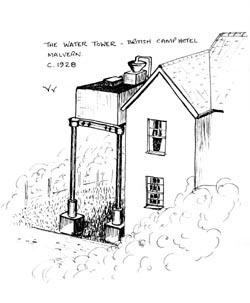 British Camp Hotel. The water tower had a 2,000 gallons capacity and was at roof level, supported on legs. It was a galvanised tank up until about 1950 when it was replaced by a Sectional Braithwaite Tank, installed by the brewery. Reservoir Cottage at the British Camp reservoir was occupied by Mr L B Howell (the resident operative) and Mrs Howell. Their water was supplied by the back pressure of the pumping main during and after pumping operations.
British Camp Hotel. The water tower had a 2,000 gallons capacity and was at roof level, supported on legs. It was a galvanised tank up until about 1950 when it was replaced by a Sectional Braithwaite Tank, installed by the brewery. Reservoir Cottage at the British Camp reservoir was occupied by Mr L B Howell (the resident operative) and Mrs Howell. Their water was supplied by the back pressure of the pumping main during and after pumping operations.
In 1946 water was charged at 5/- per 1,000 gallons, with users each having meters. In the late 1960s this arrangement was replaced by a public main extension from Jubilee Drive in spite of Owls Hole Spring never apparently running dry.
The Owls Hole pump is a triple throw, reciprocating, open crank, positive displacement pump. Numbered 84135, it was made in 1927 by Joseph Evans, Engineers of Wolverhampton and was likely installed at Owls Hole about that time. Being a ram type pump it required an "open end" distribution network, hence the earlier mentioned water tower. It served the local community for about 40 years until the main was laid from
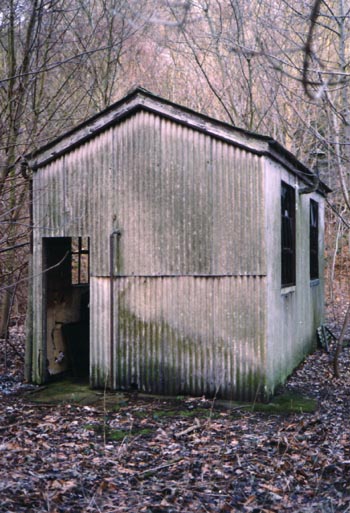 he Malvern Hills District Council Water Dept. maintained the pump in the 1940s. By the 1960s they had become the South West Worcestershire Water Company. Bert Howell managed the pump house from 1 July 1946 eventually retiring in 1979. A Mr Judson was the water engineer and Tim Brazier stood in from time to time when the regular operative at British Camp was unavailable. Assisting Bert Howell in the later years was John Hiles. Pumping was usually for about four hours each day, excluding Sundays, at a rate of 600 gallons per hour. Cliff Whalley was the superintendant. The isolated pump house was only ever lit by gas. Nearby, the spring which supplied the pump still flows into a blue brick chamber and then into a series of reservoirs, now derelict.
he Malvern Hills District Council Water Dept. maintained the pump in the 1940s. By the 1960s they had become the South West Worcestershire Water Company. Bert Howell managed the pump house from 1 July 1946 eventually retiring in 1979. A Mr Judson was the water engineer and Tim Brazier stood in from time to time when the regular operative at British Camp was unavailable. Assisting Bert Howell in the later years was John Hiles. Pumping was usually for about four hours each day, excluding Sundays, at a rate of 600 gallons per hour. Cliff Whalley was the superintendant. The isolated pump house was only ever lit by gas. Nearby, the spring which supplied the pump still flows into a blue brick chamber and then into a series of reservoirs, now derelict.
Picture: The Pump House at Owls Hole, 1994.
The pump remained in situ until 1994 when it was removed for renovation. By then it had deteriorated considerably and suffered 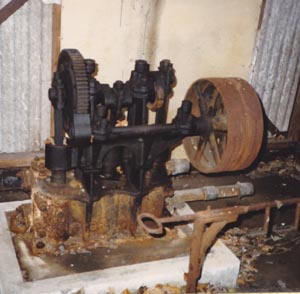 severe frost damage, which had caused one of the pistons to burst. The pump is now restored to workable order and made its debut when it was put on display for the launch of Aquae Malvernensis* at the Great Malvern Winter Gardens in November 1994. An electric motor was used to reciprocate the pump at the time in the absence of a power unit of suitable type and vintage. During field research a further discovery was the original 1927 Crossley paraffin engine lying disused at British Camp.
severe frost damage, which had caused one of the pistons to burst. The pump is now restored to workable order and made its debut when it was put on display for the launch of Aquae Malvernensis* at the Great Malvern Winter Gardens in November 1994. An electric motor was used to reciprocate the pump at the time in the absence of a power unit of suitable type and vintage. During field research a further discovery was the original 1927 Crossley paraffin engine lying disused at British Camp.
IMPORTANT, FILL OIL WELL DAILY UP TO TOP OF INDICATOR
PEG. DRAIN OFF OIL FROM CRANK CASE AFTER EVERY 50 RUNNING
HOURS, REFILL WITH NEW OIL, USE CROSSLEY "XH" HEAVY
CYLINDER OIL.
129367. BHP 7. REVS 500. TYPE PH 1050.
CROSSLEY BROTHERS LTD, OPENSHAW,
The engine is a fully-enclosed petrol/paraffin engine built at the Crossley Elstow Works,
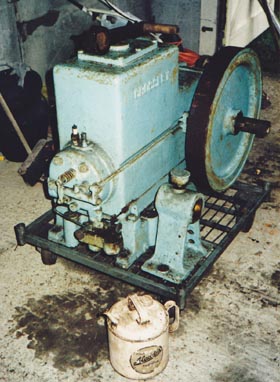
When recovered from British Camp, in a derelict state, the engine was painted sky blue over green over red, a treatment which appeared to have been largely applied since the engine last ran, paint being present on the sparking plug thread which was only partially screwed home. In addition there was oil in the petrol chamber, suggesting that earlier attempts to restart it had been fruitless. The engine was free to turn but had clearly not run for some time. It is believed that the engine had lain derelict for many years after being used to drive a fan in the building from which it was recovered. The engine had been painted merely to blend in with other equipment rather than go to the trouble of removing it.
The filter house, from where the engine was recovered, was used to supply water by pumping or gravity feed, dependent on the reservoir level, to the
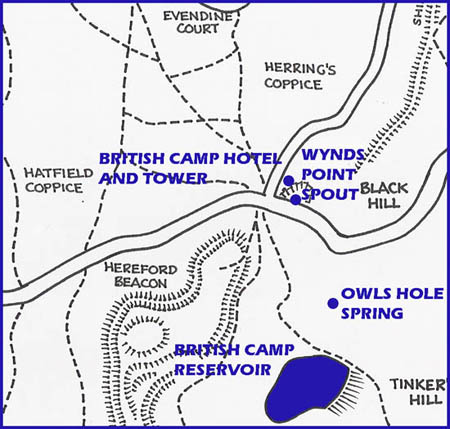
The restoration work was completed and on May 15th 1995 it was decided to align the Crossley engine with the Owls Hole pump, start up the engine and belt drive the pump for the first time in 50 years. This was a memorable occasion and the culmination of extensive local history research as well as engineering work. The reuniting of the pump and engine was an immediate success and it was as if two close friends had come together again after an extended forced separation. During the investigations, several retired water company employees, who knew the installation, were able to give invaluable advice. Bert Howell had serviced the facility after the war and was particularly concerned that we were complying with the appropriate maintenance procedures, although it was in excess of 30 years since the pump had operated!
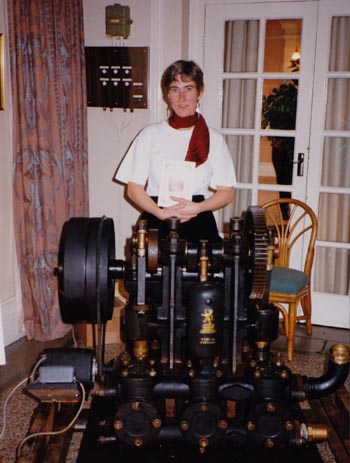
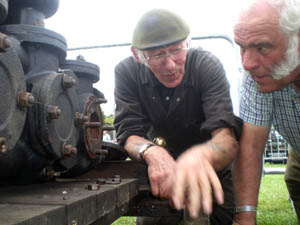 The next stage is perhaps to incorporate a large tank with the pump and engine and restore the entire facility to pumping water. Does anyone know of the whereabouts of an unwanted 2,000 gallon tank in The Malverns together with related superstructure?
The next stage is perhaps to incorporate a large tank with the pump and engine and restore the entire facility to pumping water. Does anyone know of the whereabouts of an unwanted 2,000 gallon tank in The Malverns together with related superstructure?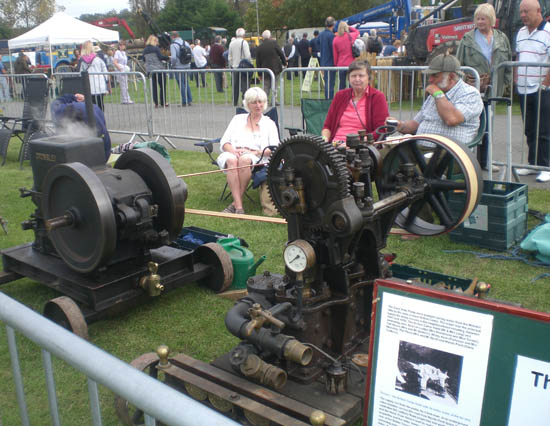
Website: Click Here
SUPPLEMENTARY INFORMATION

Celebrated Springs of
THE MALVERN HILLS
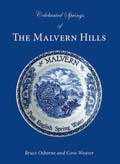 A definitive work that is the culmination of 20 years researching the springs and wells of the Malvern Hills, published by Phillimore. This is the ideal explorers guide enabling the reader to discover the location and often the astounding and long forgotten history of over 130 celebrated springs and wells sites around the Malvern Hills. The book is hard back with dust cover, large quarto size with lavish illustrations and extended text. Celebrated Springs contains about 200 illustrations and well researched text over a similar number of pages, together with seven area maps to guide the explorer to the locations around the Malvern Hills. It also includes details on the long history of bottling water in the Malvern Hills.
A definitive work that is the culmination of 20 years researching the springs and wells of the Malvern Hills, published by Phillimore. This is the ideal explorers guide enabling the reader to discover the location and often the astounding and long forgotten history of over 130 celebrated springs and wells sites around the Malvern Hills. The book is hard back with dust cover, large quarto size with lavish illustrations and extended text. Celebrated Springs contains about 200 illustrations and well researched text over a similar number of pages, together with seven area maps to guide the explorer to the locations around the Malvern Hills. It also includes details on the long history of bottling water in the Malvern Hills.
Written by Bruce Osborne and Cora Weaver, this book is available on-line for £15.00 (delivered UK) - click Malvern Bookshop on the green panel top left. Alternatively send a cheque payable to Cora Weaver with your name and address to 4 Hall Green, Malvern, Worcs. WR14 3QX.
1) TOPOGRAPHICAL LOCATION:
Malvern Hills - arguably Britain's original National Park
3) INFORMATION CATEGORY:
Industrial ArchaeologySprings and Wells General Interest


